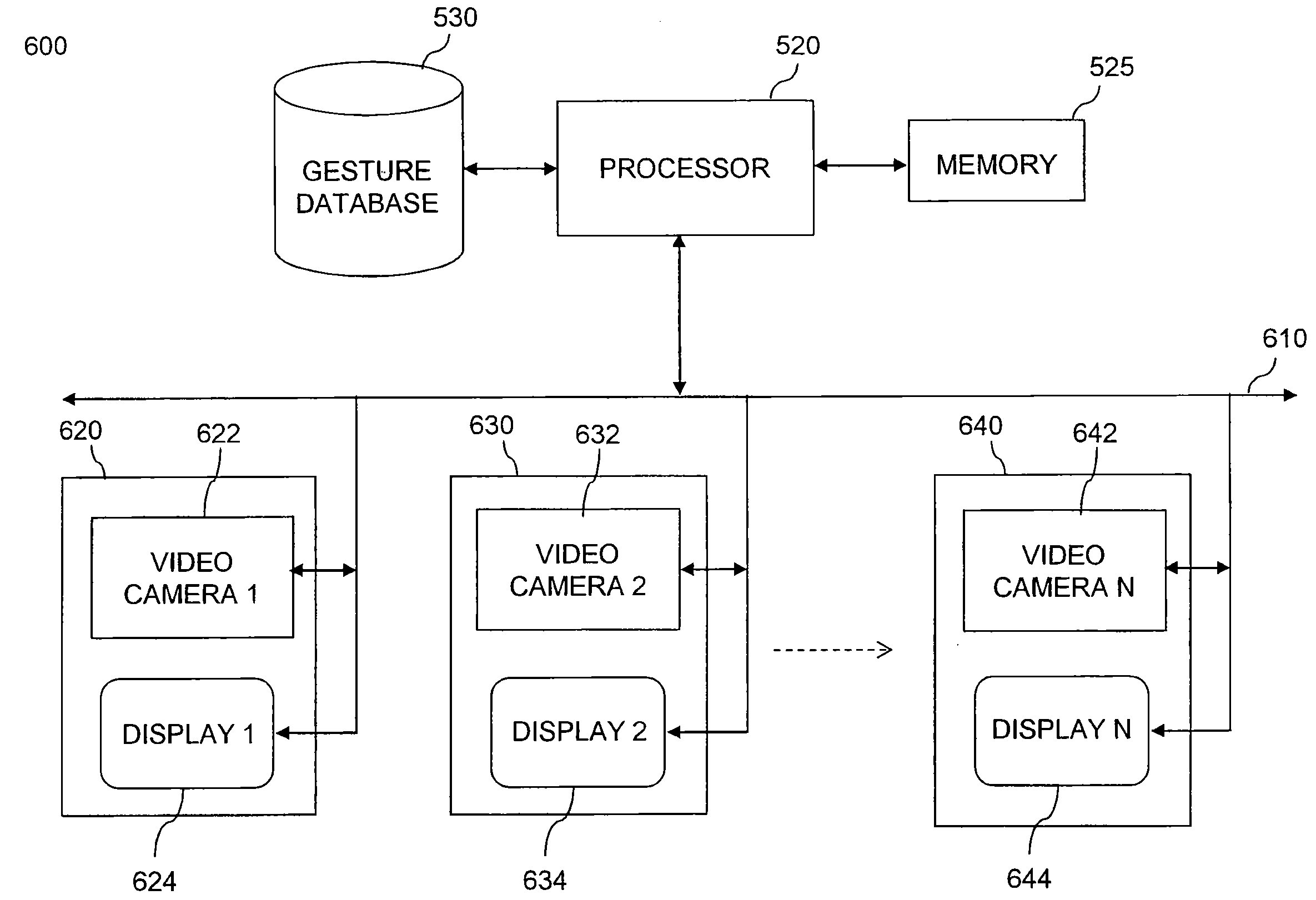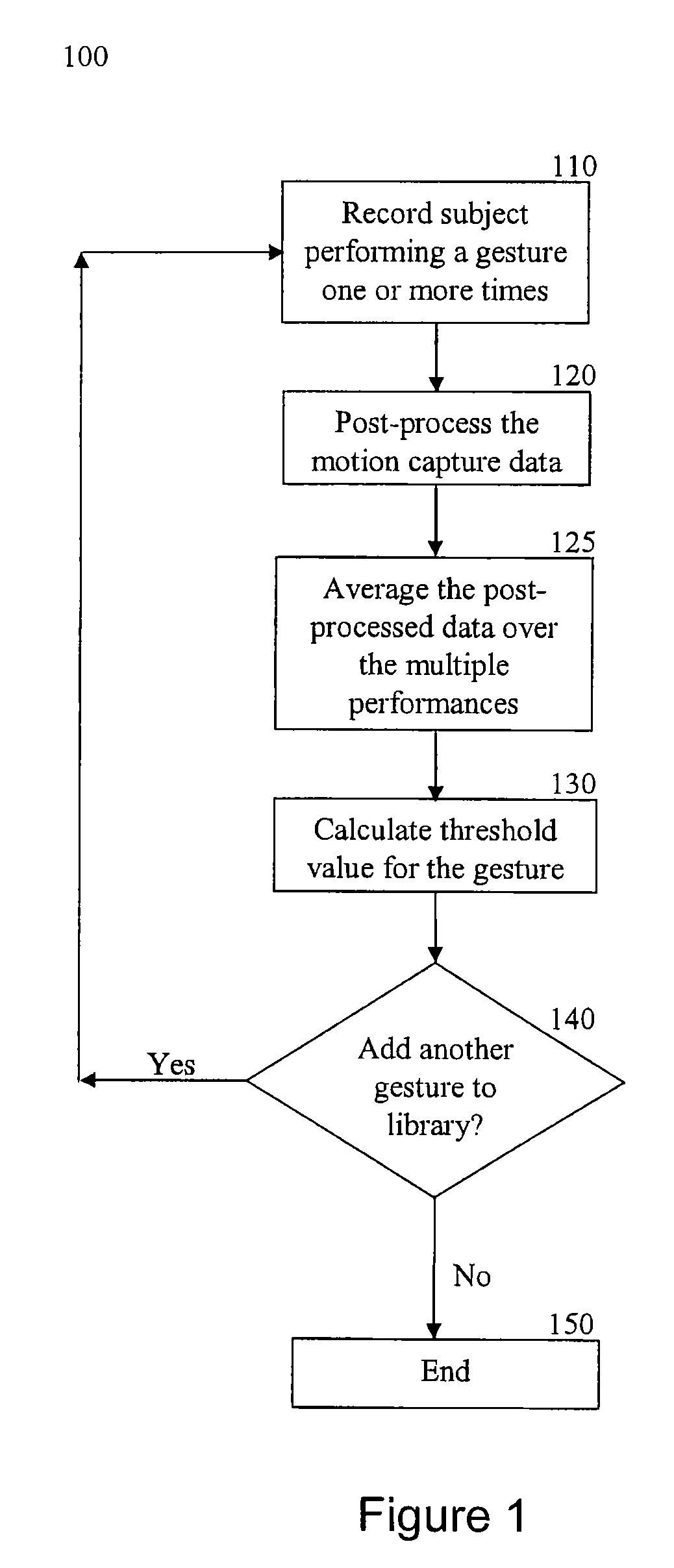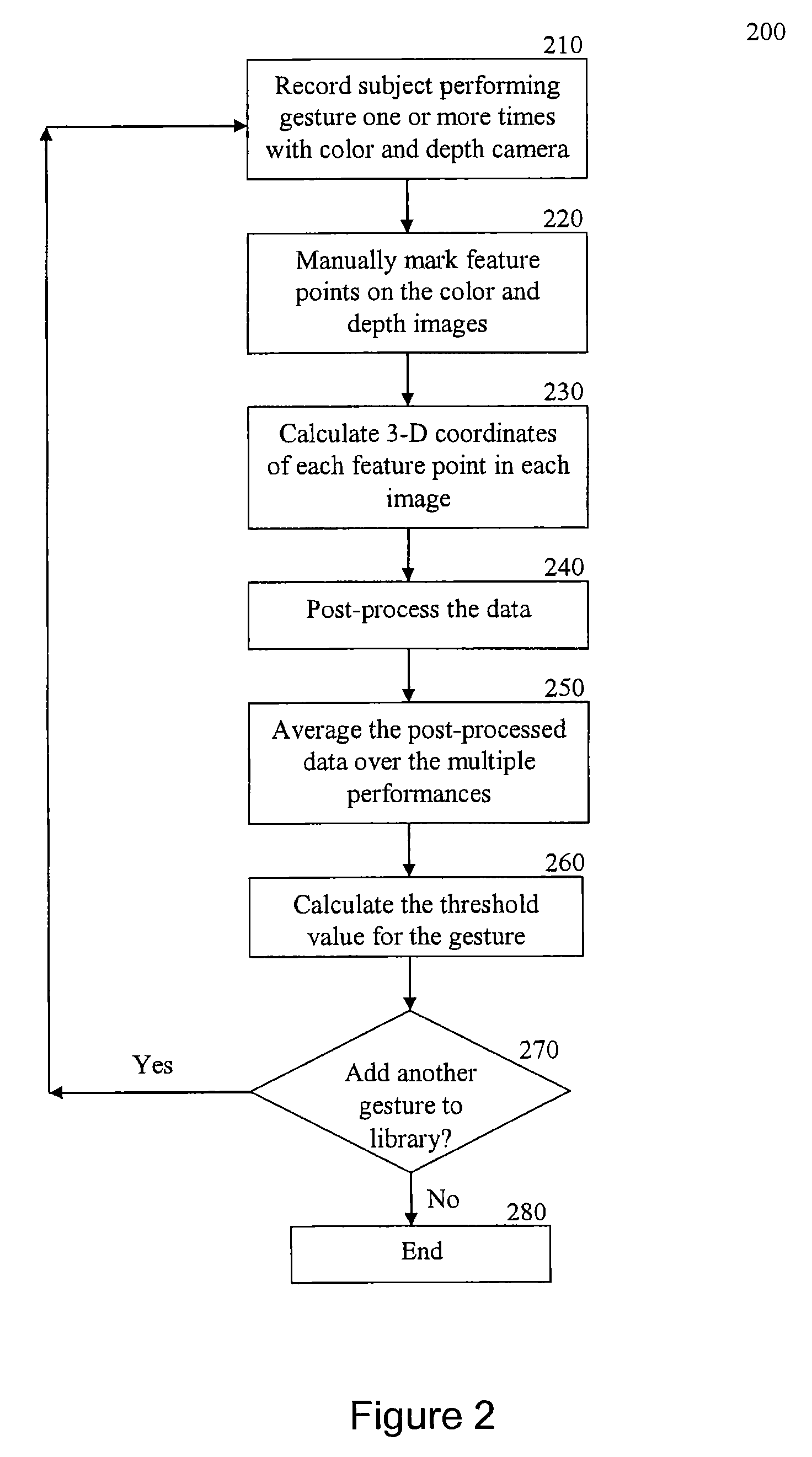Method and system for gesture classification
a technology of gesture classification and method, applied in the field of video processing of images, can solve the problems of difficult to interpret user's movements based only on raw data input, noisy data obtained by these hardware devices, and limited success in tracking user's body movements with these techniques, so as to prevent overfitting the baseline data
- Summary
- Abstract
- Description
- Claims
- Application Information
AI Technical Summary
Benefits of technology
Problems solved by technology
Method used
Image
Examples
Embodiment Construction
[0014]In order to classify a user's movements as a particular gesture, the user's movements are compared to a known set of gestures catalogued and stored in a gesture library. For each gesture in the library, baseline or “ground truth” data is first generated in a pre-processing step for each gesture. The “ground truth” data is then used as a baseline against which a user's movements are compared in order to classify the movements as a particular gesture. Data characterizing the relative positions of the feature points of interest over several images in a sequence are used for the comparison. FIG. 1 shows one method 100 by which “ground truth” data may be obtained for the gesture library.
[0015]In step 110, at least one subject is recorded performing a gesture of interest multiple times. A sensor is placed on each feature point of interest on the subject's body, and motion capture equipment is used to record the subject's movements in a sequence of images. Feature points of interest ...
PUM
 Login to View More
Login to View More Abstract
Description
Claims
Application Information
 Login to View More
Login to View More - R&D
- Intellectual Property
- Life Sciences
- Materials
- Tech Scout
- Unparalleled Data Quality
- Higher Quality Content
- 60% Fewer Hallucinations
Browse by: Latest US Patents, China's latest patents, Technical Efficacy Thesaurus, Application Domain, Technology Topic, Popular Technical Reports.
© 2025 PatSnap. All rights reserved.Legal|Privacy policy|Modern Slavery Act Transparency Statement|Sitemap|About US| Contact US: help@patsnap.com



